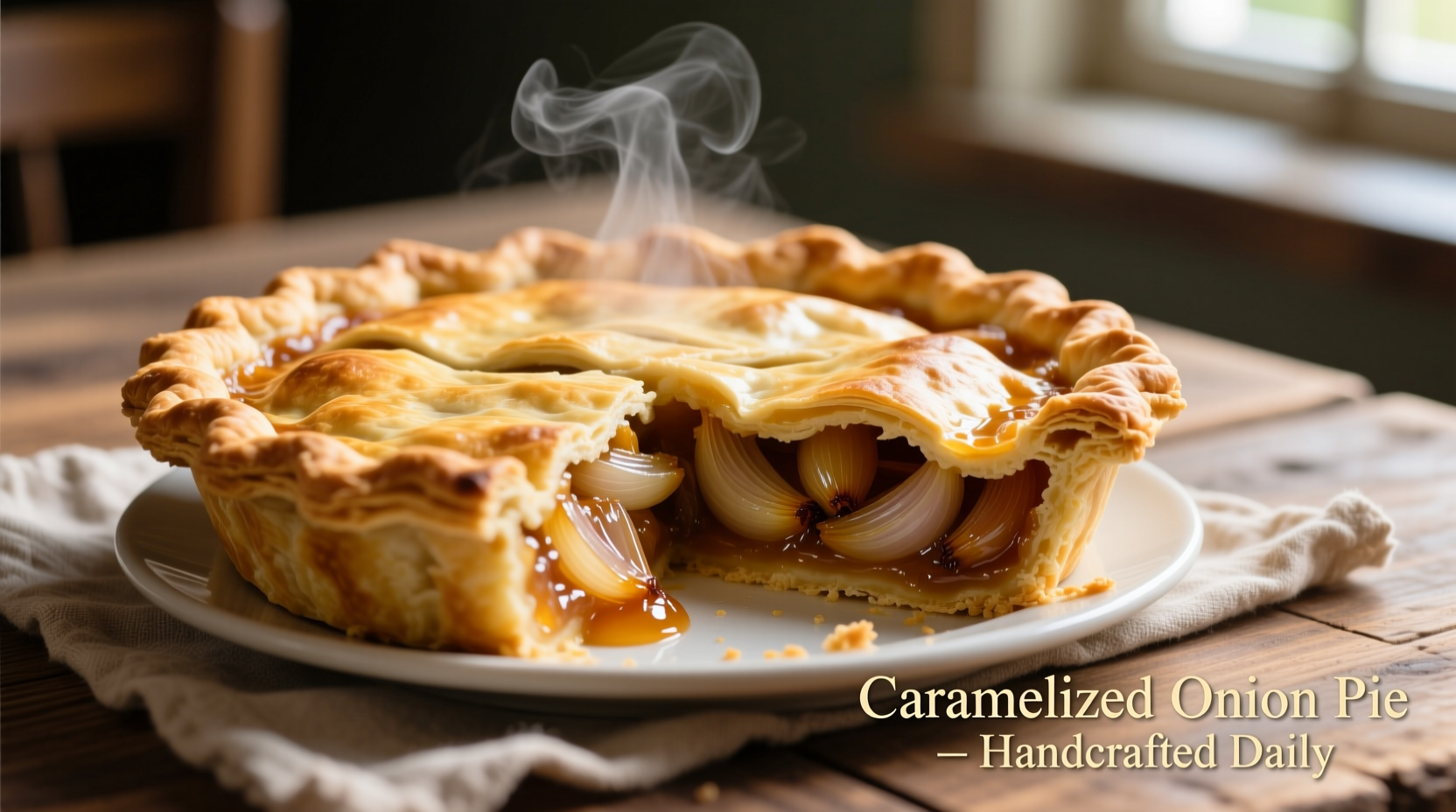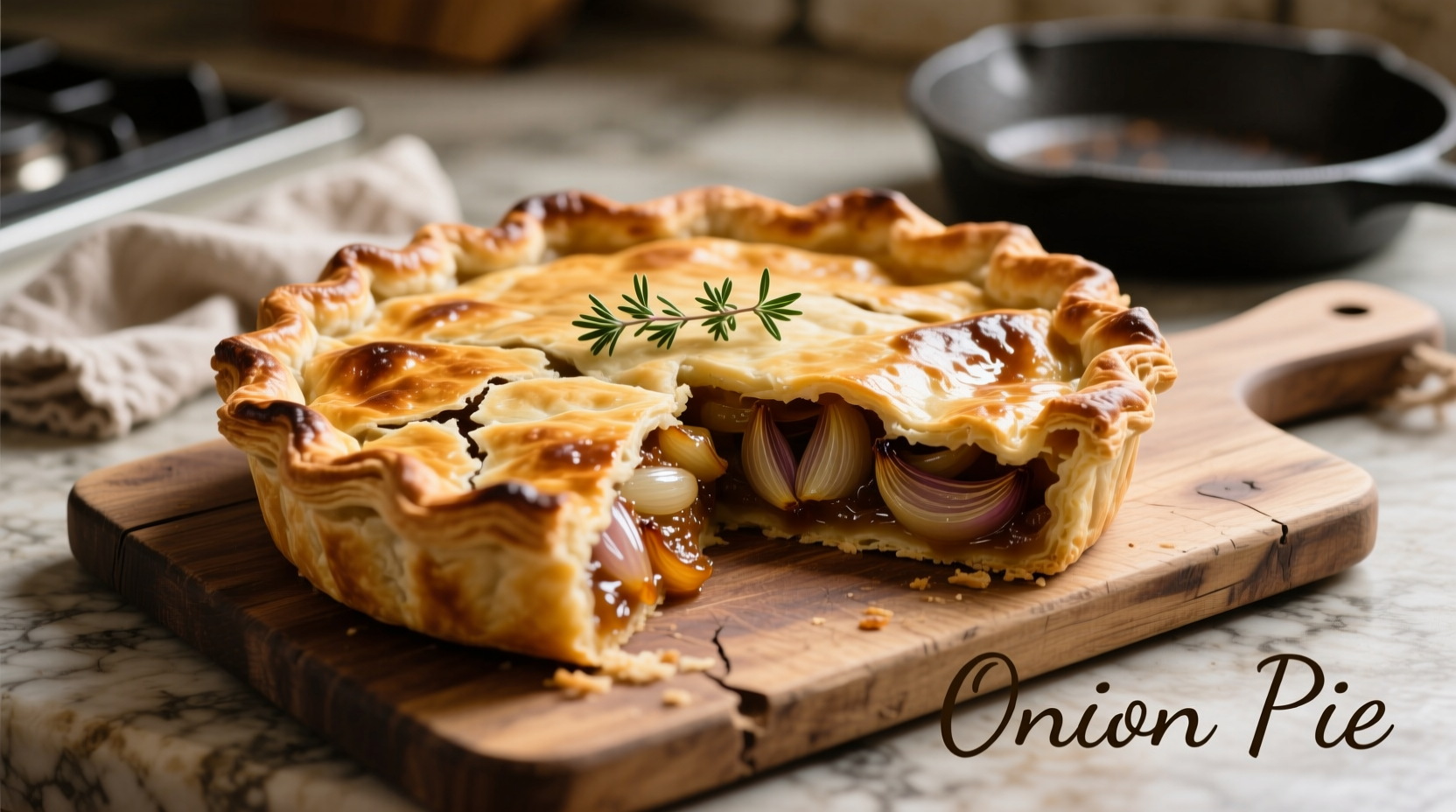
The Story Behind Your Savory Slice
Forget dessert pies—onion pie represents one of Europe's oldest savory traditions. Originating as pissaladière in 1700s Nice, this humble dish transformed leftover bread dough and abundant spring onions into a Provençal staple. Unlike modern interpretations, authentic versions featured anchovies and olives alongside onions, reflecting Mediterranean trade routes documented by culinary historians at the Oxford Companion to Food.
| Era | Key Characteristics | Historical Evidence |
|---|---|---|
| 1700-1850 | Flatbread base, wild onions, anchovy paste | Nice municipal archives: "Pain aux oignons" tax records (1742) |
| 1850-1920 | Shortcrust pastry, Niçoise olives added | La Cuisinière Provençale cookbook (1897) |
| Modern | Buttery crusts, optional cheese, global variations | UNESCO Mediterranean Diet documentation (2010) |
Why Most Onion Pies Fail (And How to Fix It)
Caramelizing onions properly makes or breaks this dish. Food science research from University of Minnesota Extension confirms onions require 40-50 minutes at 300°F (150°C) to develop complex flavors without burning. Rushing this step creates bitter notes that ruin the pie. Always use yellow onions—they contain the ideal sugar-to-water ratio for caramelization, unlike sweeter Vidalias which turn mushy.
Your Foolproof Ingredient Guide
Quality ingredients transform simple components into extraordinary results. Note these critical substitutions:
| Ingredient | Best Choice | Acceptable Substitutes | Avoid |
|---|---|---|---|
| Onions | Yellow storage onions | White onions (sharper flavor) | Vidalia, red onions |
| Crust | Buttery pâte brisée | Pre-made pie crust (unsweetened) | Sweetened pastry, biscuit dough |
| Seasoning | Thyme + black pepper | Rosemary (use sparingly) | Cinnamon, cloves |
Step-by-Step: Crafting Perfect Onion Pie
- Caramelize slowly: Cook 3 lbs sliced yellow onions with 2 tbsp butter and 1 tsp salt over medium-low heat for 45 minutes, stirring every 10 minutes. Add 1 tbsp balsamic vinegar during last 15 minutes.
- Prepare crust: Roll pâte brisée to 1/8" thickness. Fit into 9" pie dish, crimp edges. Chill 30 minutes.
- Assemble: Spread cooled onions evenly. Top with 4 anchovy fillets (optional) and 1/4 cup Niçoise olives.
- Bake: 375°F (190°C) for 35-40 minutes until crust golden. Rest 15 minutes before slicing.
Serving Wisdom: When This Pie Shines
Onion pie excels as a light lunch or appetizer but has clear limitations. According to culinary anthropologists at Society for the Anthropology of Food and Nutrition, it pairs perfectly with bitter greens salad but loses texture if reheated beyond 24 hours. Never serve cold—residual heat unlocks the Maillard reaction flavors developed during baking. For vegetarian versions, replace anchovies with 1 tsp capers, but note this alters the traditional Provençal profile.











 浙公网安备
33010002000092号
浙公网安备
33010002000092号 浙B2-20120091-4
浙B2-20120091-4